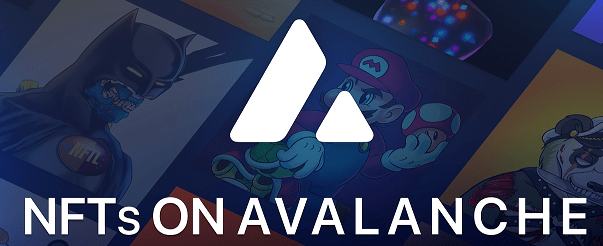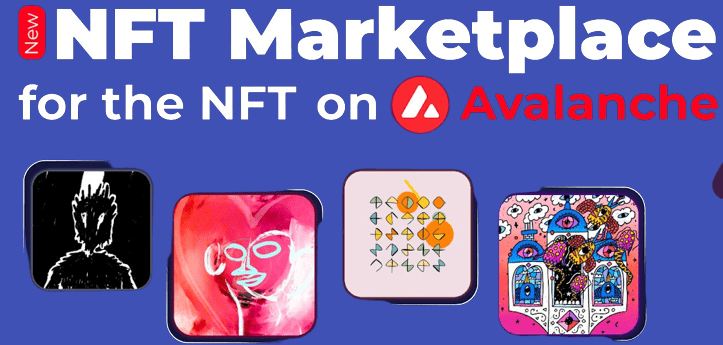

What is NFT Marketplace?
Non-Fungible Tokens can be bought and sold on an NFT marketplace (NFTs) online. NFTs are unique digital assets that show who owns a digital asset, like a piece of art, a song, a video, or other digital content. Blockchain technology makes NFTs and creates a decentralized, unchangeable ledger that keeps track of ownership and transactions.

In an NFT marketplace, creators can make NFTs by uploading their digital content and setting the terms of the sale, such as the price, royalty percentage, and other details. Buyers can look around the marketplace and buy NFTs that catch their eye. The marketplace gives creators a safe and open place to sell their digital assets and gives buyers a place to buy original digital content.
In the past few years, NFT marketplaces have become very popular, especially in the art world, where digital artists can sell their work directly to buyers without going through mediators. NFT marketplaces give creators a new way to make money and investors a new type of asset since the value of NFTs can go up based on how much people want them and how few there are.
Avalanche is an open-source blockchain network that is fast, scalable, and easy to use. It was released in September 2020. The Avalanche network is made to offer fast, secure, and cheap transactions. This makes it popular for decentralized applications (dApps), decentralized finance (DeFi) applications, and other blockchain-based services.
The Avalanche network is based on a new consensus mechanism called Avalanche consensus. The Avalanche consensus mechanism checks transactions and keeps the network's integrity using a system of subnets and validators. This allows the network to have high transaction throughput and low latency.

The Avalanche network supports multiple virtual machines, such as the Ethereum Virtual Machine (EVM). This lets developers use Solidity, the same programming language used for Ethereum smart contracts, to deploy smart contracts on the Avalanche network. This makes it easy for developers to move their current dApps built on Ethereum to Avalanche.
Avalanche also lets you create tokens and Non-Fungible Tokens (NFTs), which can be traded on the Avalanche network or other compatible blockchain networks. This makes it a flexible platform for building apps and services that don't need a central server.
Snowman is a set of tools for developers that make it easy to build, deploy, and manage decentralized applications (dApps) on the Avalanche network. The Snowman suite has some essential features, such as:
AvalancheJS: AvalancheJS is a JavaScript library gives you a set of tools and utilities for working with the Avalanche network. Developers can easily create and sign transactions, ask for information from the network, and interact with smart contracts using AvalancheJS.
Avalanche Wallet: The Avalanche Wallet is a non-custodial wallet that lets users safely manage their digital assets on the Avalanche network. The wallet can hold different assets, such as AVAX, the native token of the Avalanche network, and other tokens and non-fungible tokens (NFTs).
Avalanche Bridge: The Avalanche Bridge is a tool that lets users move assets between the Avalanche network and other blockchain networks, like Ethereum, that are compatible with it. The bridge makes moving assets from one network to another easy and safe.
Avalanche Network Explorer: The Avalanche Network Explorer is a web-based tool that lets users explore and analyze the Avalanche network. With the network explorer, users can look at the history of transactions, keep an eye on network activity, and find out how transactions are going.
The Avalanche Dashboard is a web-based tool that gives developers a high-level look at how their dApp is doing on the Avalanche network. The dashboard shows real-time analytics and metrics, such as the number of transactions, the amount of gas used, and network activity.
Setting up a development environment, designing and building the marketplace, deploying it to the Avalanche network, testing it, and launching it are all parts of making an NFT marketplace on Avalanche. Here's a step-by-step guide on how to build an NFT marketplace on Avalanche:
Step 1: Set up a Development Environment
The first step is setting up a development environment with the software and tools needed to build the NFT marketplace. Here's what you'll need to get started:
Avalanche Network: To set up your marketplace, you will need to connect to the Avalanche network. You can set up your Avalanche node or use a service like QuickNode, Ankr, or Figment.
Solidity Compiler: If you want to make smart contracts, you will need to use the Solidity programming language. Your Solidity code is turned into a bytecode that can be run on the Avalanche network by the Solidity compiler.
Web3.js Library: To connect your web app to the Avalanche network, you will use the Web3.js library.
IDE: You can use any IDE you want, but Visual Studio Code, Atom, and Sublime Text are popular ones.

Step 2: Make and set up the market
The next step is to plan and build the NFT marketplace. Here are the essential parts of a regular NFT market:
Smart Contracts: To set the rules for making, selling, and buying NFTs, you will need to make smart contracts. You can use innovative contract templates already out there, like OpenZeppelin, or you can make your own from scratch.
User Interface: You must build a user interface that lets people look at, buy, and sell NFTs. You can build your UI with a web development framework like React or Angular.
You'll need to keep information about the NFTs in the database, like their name, description, and image. You can store this information in a database like MongoDB or PostgreSQL.
Step 3: Send the Marketplace to Avalanche
The next step is to put the NFT marketplace on the Avalanche network. Here's what you need to do:
Get the intelligent contracts together: To turn your smart contracts into bytecode, you can use the Solidity compiler.
Smart contracts should be used: To put your intelligent contracts on the Avalanche network, use the Web3.js library. To sign the transaction, you must give the address of your Avalanche account and your private key.
Set up the User Interface (UI): Change your UI code to point to the intelligent contracts already running on Avalanche.
Step 4: Test the Market and Open It
The last step is to test the NFT marketplace and get it up and running. Here's what you need to do:
Test the Market: Test the market to ensure it works. You can test how to buy and sell NFTs on the Avalanche network with test tokens.
Launch the Marketplace: Once you've tried the marketplace and are happy with its work, you can make it available to the public. To bring buyers and sellers to the market, you must market it.
Developing on the Avalanche platform has several pros:
High Performance: The Avalanche network is made to have a high transaction throughput and low latency, so developers can make decentralized apps that work quickly and respond to user input.
Low Cost: Generally, transactions on the Avalanche network are cheaper than on other blockchain networks. This makes it cheaper for developers to build and deploy dApps.
Interoperability: The Avalanche network supports multiple virtual machines, including the Ethereum Virtual Machine (EVM). This makes it easy for developers to move their Ethereum-based dApps to Avalanche.
Scalability: The Avalanche network is made to be very scalable, and it can handle thousands of transactions per second. Because of this, it is a great place to build large-scale, decentralized apps.
Security: The Avalanche network uses a new consensus mechanism called Avalanche consensus, which gives it a high level of security and resistance to attacks.
Developer-friendly: The Avalanche platform has a set of developer tools, like the Snowman suite, that make it easy for developers to build, deploy, and manage dApps on the Avalanche network.
Decentralized Finance (DeFi) Support: The Avalanche network has become very popular in the DeFi space, and a wide range of DeFi protocols and applications are already running on the network.
Conclusion:
Developing an NFT marketplace on Avalanche involves:
Setting up a development environment.
Designing and building the marketplace.
Launching it are all part of developing an NFT marketplace on Avalanche.
Even though the process may seem complicated, you can build a successful NFT marketplace on the Avalanche network with the right tools and resources. The Avalanche platform has a blockchain network that is fast, scalable, and easy for developers to use. This makes it a good fit for a wide range of decentralized applications, especially in the DeFi space.